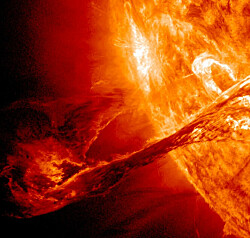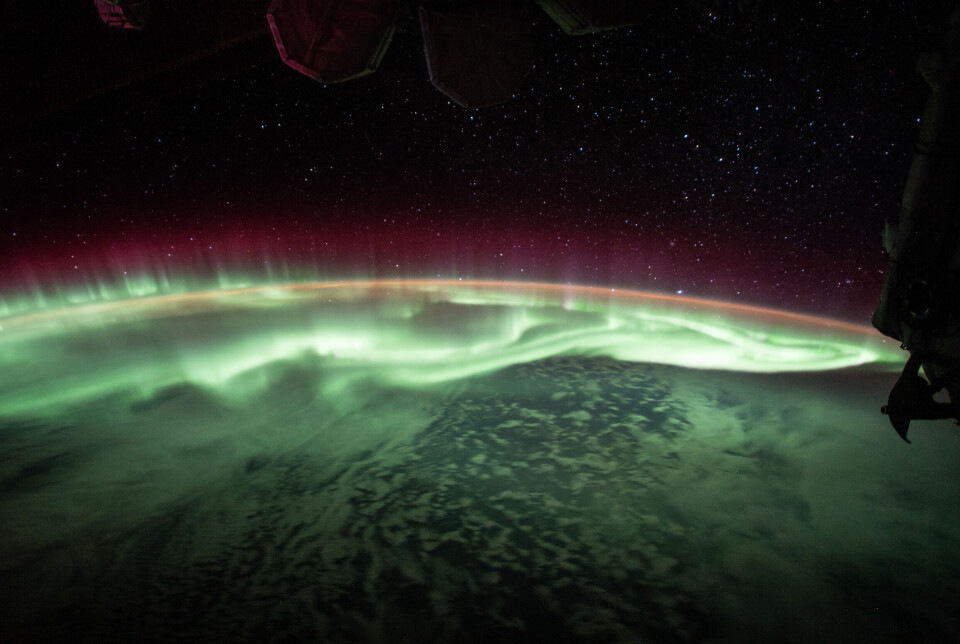
Where does space begin?
This simple question has no simple answers.
When are you actually out in space? At first glance, it seems simple. Outer space appears to be something fundamentally different from our own familiar surroundings.
We are surrounded by air, heat and gravity, whereas space is empty, desolate and cold.
Outer space is fundamentally different from what we experience down here, isn't it?
But is there a boundary? Is there a place above our heads where you clearly transition to being in outer space?
This is a question that has been debated for decades and to which there is still no good answer, according to the United Nations Office for Outer Space Affairs.
“There’s no internationally agreed upon boundary between our atmosphere and outer space,” says Alla Pozdnakova. She is a law professor and her specialties include space law and maritime law.
Why is this question so hard to figure out?
We’re in space, too
This boundary question can be interpreted in two different ways. One is political and revolves around the kind of influence different countries have on the airspace above them and how far this influence extends.
This political arena is complicated but has little to do with the physical world. We'll come back to why this is so complicated.
The second interpretation has to do with the great physical difference between space down here and space out there. But what is the difference, and is it even possible to delineate a transition point from one to the other?
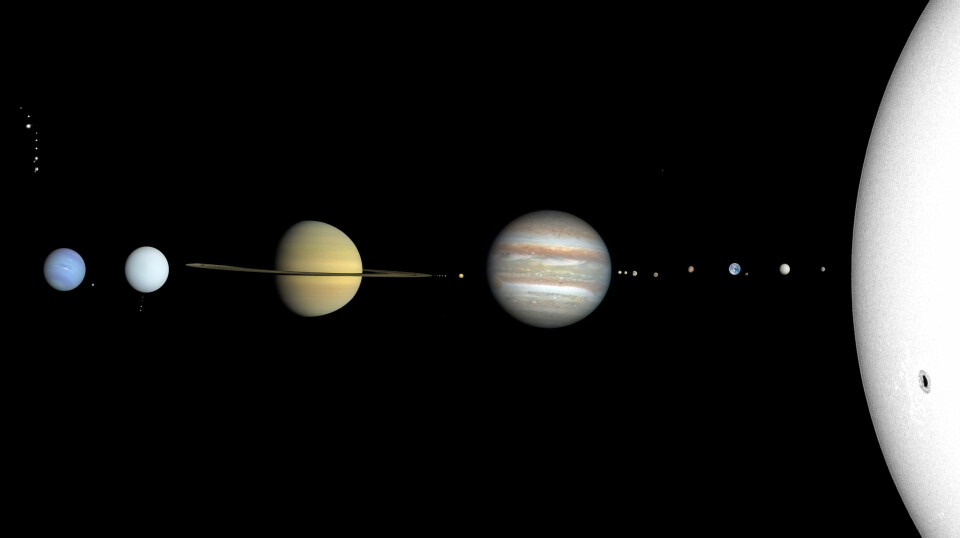
Soon it will be a vacuum
The Earth orbits the sun, and it takes one year for the Earth to make a complete trip around the sun. The Earth's orbit is quite long – about 150 million kilometres.
This means that the Earth, and everything held by the Earth's gravity, has an astronomical speed around the sun – a whopping 108 000 kilometres per hour relative to the sun, according to NASA.
In other words, the atmosphere, you and I are all moving at these astronomical speeds as well, even though it doesn't feel like we’re moving at all.
And this means that the entire globe is constantly moving towards new parts of space. If you imagine a grid, the Earth is constantly moving into new areas of space. The only difference is that we, the atmosphere and everything else on the globe are moving along with the globe, held in place by the Earth's gravity.
Imagine a place in space located in the orbit of the Earth. Where empty space – a vacuum – used to be, you now find atmosphere, people and animals. In one short moment, it all returns to being a vacuum.
But this is a theoretical exercise. Humans need to delineate where outer space begins. So where is it relative to the Earth we stand on?
Where the air ends?
Our atmosphere is made up of different layers, but these layers show no clear transition point to outer space, either. The second highest layer is called the thermosphere, which extends from about 70 to 700 kilometres, according to NASA.
The International Space Station, which orbits about 400 kilometres above our heads, is located in the thermosphere.
Intuitively, this seems like outer space, but there is still some air here. The distance between the air molecules is much, much farther apart than in the atmosphere lower down, but it is enough for the space station to be slowed down a little by the air.
Once in a while the space station needs a nudge from visiting spacecrafts. It would otherwise lose so much speed that it would fall to Earth and partially burn up in the atmosphere. When the space station is retired, death by fire will be the way it departs, according to Space.com.
The atmosphere continues far above the space station. The outermost part of the atmosphere is called the exosphere, and it continues all the way up to about 10 000 kilometres above the Earth's surface. The atmosphere becomes less and less dense until it becomes almost impossible to distinguish it from what is called outer space.
There is no clear natural boundary to outer space, but some suggestions have been made for where we could set an imaginary boundary, according to Astronomy magazine.
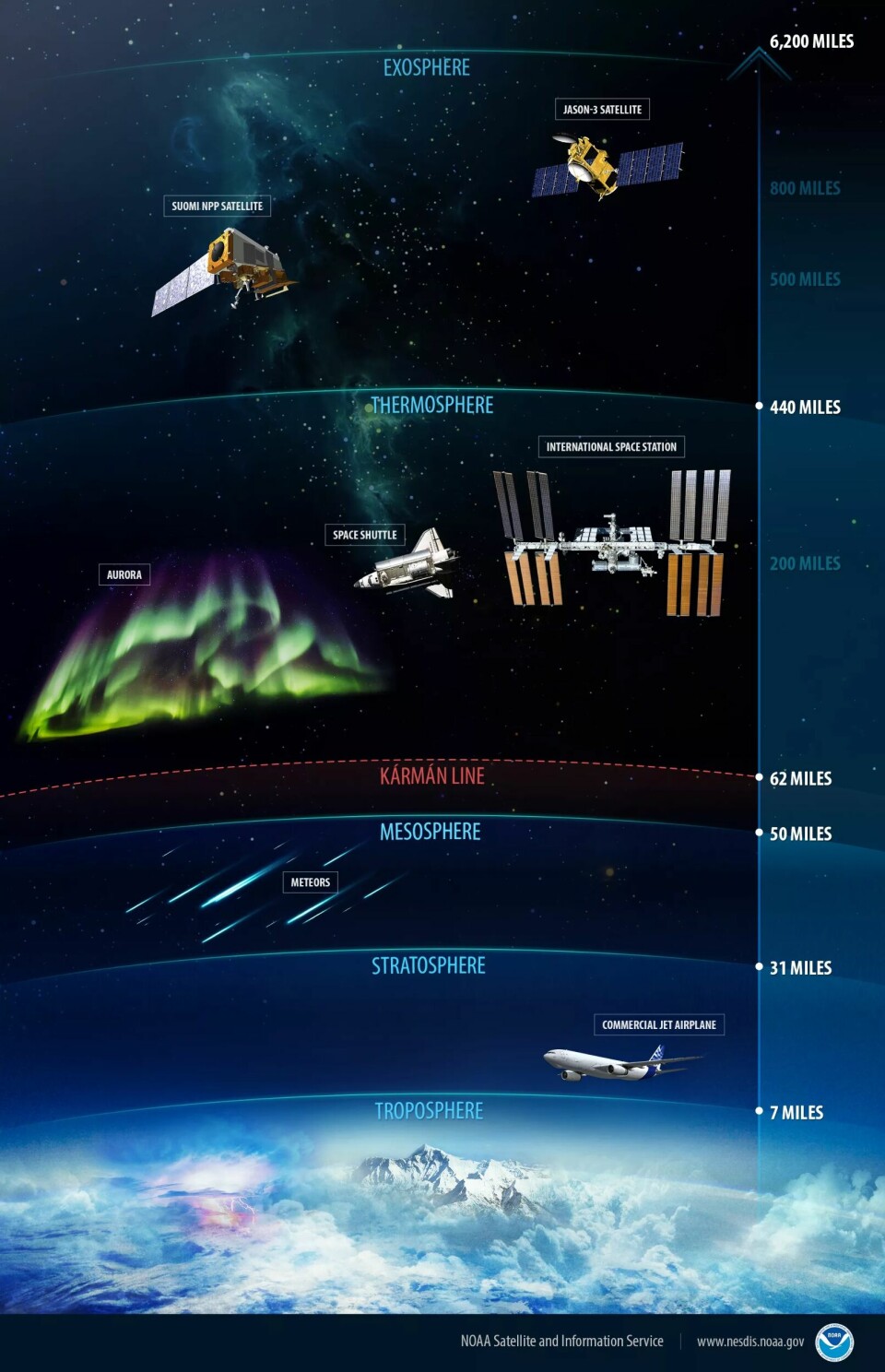
100 kilometres straight up?
The most famous proposed boundary is called the Kármán line, named after the Hungarian engineer Theodore von Kármán.
He suggested a boundary around 100 kilometres above the ground. But what’s so special about this distance?
Kármán’s idea is based on a kind of theoretical aerodynamic boundary, where the atmosphere becomes so thin that airplanes have to reach extremely high speeds to stay aloft. Eventually, there is so little air that the plane requires high speed just to stay up and will eventually begin orbiting the Earth.
This boundary was calculated to be around 100 kilometres above sea level. The world air sports organization, Fédération Aéronautique Internationale (FAI), keeps track of who can call themselves astronauts, and they use this Kármán line to delimit where Earth’s space begins.
This is extremely high up for an airplane, and it is practically impossible to get this far up without a rocket. The U-2 spy plane is specially designed to be able to fly at high altitudes, usually approximately 21 kilometres up above the Earth.
There is nothing special about this height, beyond the idea of a kind of theoretical, aerodynamic boundary.
But why should space have a boundary at all? This is a political question and involves what happens in the airspace above a country.
Everyone shall have access to space
All countries have an airspace above them, but no agreements or guidelines specify where this airspace ends.
Countries can decide on access within their own airspace.
“Other states must request consent or have their own agreements to be able to use the airspace above another country,” says Pozdnakova.
But space is different. The Outer Space Treaty states that all countries shall have free access to outer space, and was signed by most of the world's countries in the 1960s.
There is thus a big difference between activity that happens in the airspace or in outer space above a state. Where one ends and the other begins is not clear.
“Internationally, a new ‘Near Space zone’ between airspace and outer space has been proposed, where the underlying state has jurisdiction, but not sovereignty,” says Pozdnakova.
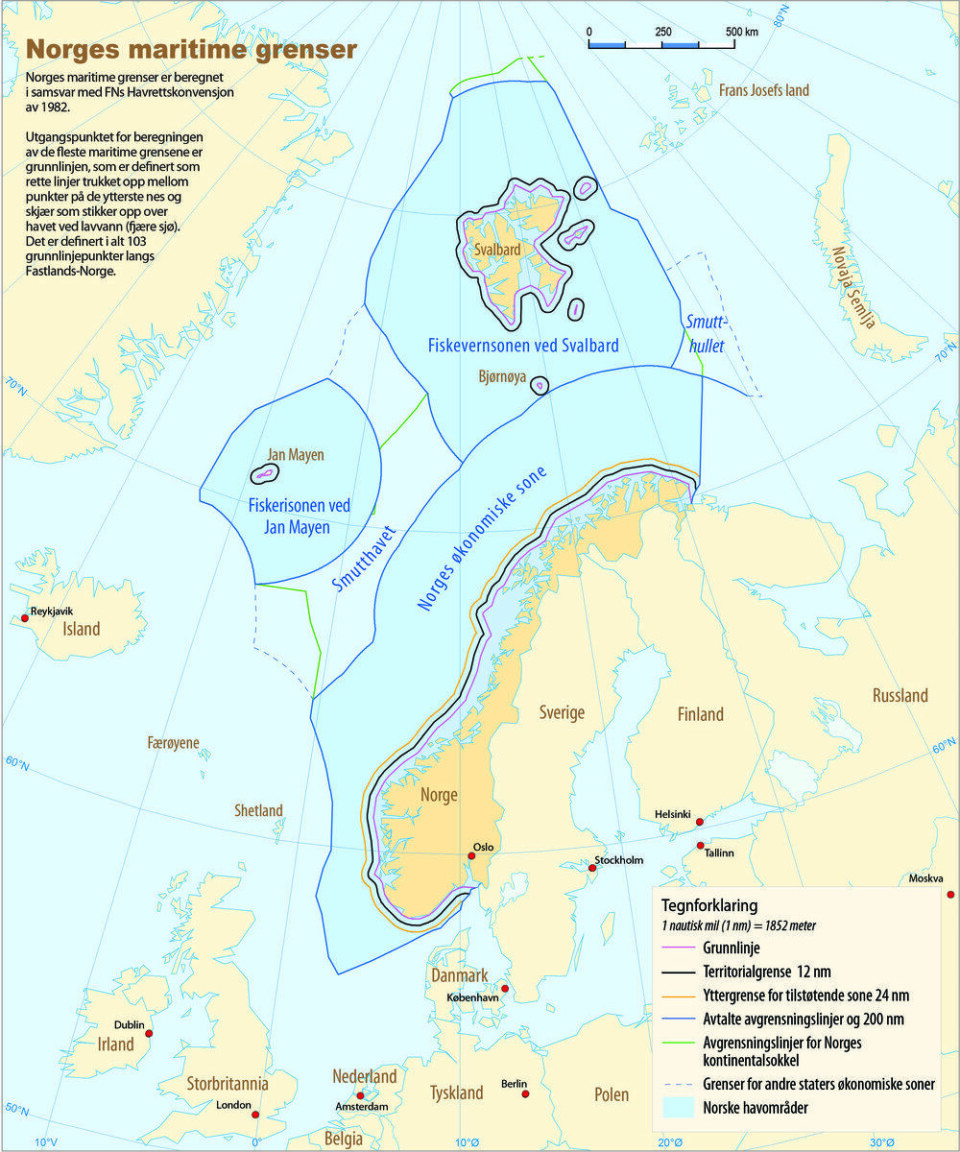
This zone would function a bit like the so-called law of the sea economic zone. This is the region beyond the coast where the country to which the zone belongs can exploit the natural resources, but it cannot deny other states free movement in this area.
Pozdnakova is not sure how strong the interest is in creating such a zone, but it would be the region between 18 and 160 kilometres above Earth’s surface. Civil aviation regulations apply below 18 kilometres, she says.
“But a lot of other activities happen at higher altitudes that an underlying state cannot effectively control, like research rockets, weather balloons or satellites that travel a few hundred kilometres above the Earth.”

Swedish rocket landed in Norway
No international upper limit has been adopted for the airspace of different countries, says Pozdnakova. She notes that the first artificial satellite, Sputnik, went up to 900 kilometres above the Earth, and no states objected to it moving over their territories.
Now it is agreed that sending objects into space that fly over other countries at a certain height is fine. But a lot remains unclear.
For example, launch paths from one country can pass over the territories of other countries. Even if they are far above the Earth, this can cause problems when something goes wrong.
On Monday 24 April, a rocket launched from the Esrange Space Center in Kiruna, Sweden malfunctioned. It landed 15 kilometres inside Norway, although the intended landing was in Sweden, according to NRK (link in Norwegian).
The rocket was meant to attain an altitude of about 250 kilometres to carry out its scientific mission.
The Norwegian Ministry of Foreign Affairs says that they take a serious view of unauthorized activity on the Norwegian side of the border, and that such an incident could potentially cause great damage, writes NRK.
The Swedish Space Corporation notified the Norwegian Armed Forces of both the launch and the landing anomaly.
What could happen in the future?
This is an example of possible unclear boundaries above a country.
“Drones and other objects that can be perceived as a security threat and an encroachment on state sovereignty over the airspace above their territory make the issue even more difficult.”
By way of example, “satellites can take pictures of the Earth without the affected state necessarily being able to say anything,” says Pozdnakova.
But she believes that designating a limit to airspace for individual states would come into conflict with the purpose and principles of the Outer Space Treaty, which is meant to ensure that all states shall have access to space.
With the potential for more launches and launch sites, the question is whether clarifying the boundaries will be needed in the future.
———
Read the Norwegian version of this article at forskning.no












